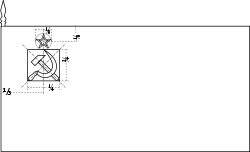Zygmunt Smalcerz
| Zygmunt Smalcerz | ||||||||||||||||||||||||||||||||||||||||||||||||||||||||||||||||||||||||||||||||||||||||||||||||||||||||||||||||
 Zygmunt Smalcerz 2007 | ||||||||||||||||||||||||||||||||||||||||||||||||||||||||||||||||||||||||||||||||||||||||||||||||||||||||||||||||
| Persönliche Informationen | ||||||||||||||||||||||||||||||||||||||||||||||||||||||||||||||||||||||||||||||||||||||||||||||||||||||||||||||||
| Name: | Zygmunt Antoni Smalcerz | |||||||||||||||||||||||||||||||||||||||||||||||||||||||||||||||||||||||||||||||||||||||||||||||||||||||||||||||
| Nationalität: | ||||||||||||||||||||||||||||||||||||||||||||||||||||||||||||||||||||||||||||||||||||||||||||||||||||||||||||||||
| Geburtsdatum: | 8. Juni 1941 | |||||||||||||||||||||||||||||||||||||||||||||||||||||||||||||||||||||||||||||||||||||||||||||||||||||||||||||||
| Geburtsort: | Bestwinka, Polen | |||||||||||||||||||||||||||||||||||||||||||||||||||||||||||||||||||||||||||||||||||||||||||||||||||||||||||||||
| Größe: | 153 cm[1] | |||||||||||||||||||||||||||||||||||||||||||||||||||||||||||||||||||||||||||||||||||||||||||||||||||||||||||||||
| Medaillenspiegel | ||||||||||||||||||||||||||||||||||||||||||||||||||||||||||||||||||||||||||||||||||||||||||||||||||||||||||||||||
|---|---|---|---|---|---|---|---|---|---|---|---|---|---|---|---|---|---|---|---|---|---|---|---|---|---|---|---|---|---|---|---|---|---|---|---|---|---|---|---|---|---|---|---|---|---|---|---|---|---|---|---|---|---|---|---|---|---|---|---|---|---|---|---|---|---|---|---|---|---|---|---|---|---|---|---|---|---|---|---|---|---|---|---|---|---|---|---|---|---|---|---|---|---|---|---|---|---|---|---|---|---|---|---|---|---|---|---|---|---|---|---|---|
| ||||||||||||||||||||||||||||||||||||||||||||||||||||||||||||||||||||||||||||||||||||||||||||||||||||||||||||||||
Medaillen
| ||||||||||||||||||||||||||||||||||||||||||||||||||||||||||||||||||||||||||||||||||||||||||||||||||||||||||||||||
Zygmunt Antoni Smalcerz (* 8. Juni 1941 in Bestwinka) ist ein ehemaliger polnischer Gewichtheber.
Karriere
Smalcerz wurde während seiner sportlichen Laufbahn dreimal Welt- sowie viermal Europameister im Fliegengewicht (damals bis 52 kg). Den Höhepunkt seiner Karriere stellte der Olympiasieg 1972 in München in der Klasse bis 52 kg dar. Er stellte vier Weltrekorde auf, zwei davon im Reißen und jeweils einen im Drücken und Stoßen. 2002 wurde er in die Hall of Fame der IWF aufgenommen.[2]
Bestleistungen
- Drücken: 115,0 kg 1971 bei der WM in Lima in der Klasse bis 52 kg
- Reißen: 105,0 kg 1975 bei der WM in Moskau in der Klasse bis 52 kg
- Stoßen: 132,5 kg 1975 bei der WM in Moskau in der Klasse bis 52 kg
- Zweikampf: 237,5 kg (105,0 + 132,5 kg) 1975 bei der WM in Moskau in der Klasse bis 52 kg
- Dreikampf: 340,0 kg (115,0 + 95,0 + 130,0 kg) 1971 bei der WM in Lima in der Klasse bis 52 kg
Einzelnachweise
- ↑ Zygmunt Smalcerz in der Datenbank von Sports-Reference (englisch; archiviert vom Original)
- ↑ Weightlifting Hall of Fame List of Members
Weblinks
- Porträt auf weightliftingexchange.com
- Zygmunt Smalcerz auf chidlovski.net
- Zygmunt Smalcerz beim Institut für Angewandte Trainingswissenschaft
| Personendaten | |
|---|---|
| NAME | Smalcerz, Zygmunt |
| ALTERNATIVNAMEN | Smalcerz, Zygmunt Antoni (vollständiger Name) |
| KURZBESCHREIBUNG | polnischer Gewichtheber |
| GEBURTSDATUM | 8. Juni 1941 |
| GEBURTSORT | Bestwinka |
Auf dieser Seite verwendete Medien
Pictograms of Olympic sports - Weightlifting. This is unofficial sample picture. Images of official Olympic pictograms for 1948 Summer Olympics and all Summer Olympics since 1964 can be found in corresponding Official Reports.
Flag of Second Polish Republic and later People's Republic of Poland in period from March 29, 1928 to March 10, 1980. Red shade used here is HTML "vermilion" #E34234. Proportion 5:8.
Flag of Second Polish Republic and later People's Republic of Poland in period from March 29, 1928 to March 10, 1980. Red shade used here is HTML "vermilion" #E34234. Proportion 5:8.
Autor/Urheber: B1mbo, Lizenz: CC BY-SA 2.5
Zeichnung einer Goldmedaille, basierend auf Olympic rings.svg.
Autor/Urheber: B1mbo, Lizenz: CC BY-SA 2.5
Zeichnung einer Silbermedaille, basierend auf Olympic rings.svg.
Autor/Urheber: B1mbo, Lizenz: CC BY-SA 2.5
Zeichnung einer Bronzemedaille, basierend auf Olympic rings.svg.
Olympic Rings without "rims" (gaps between the rings), As used, eg. in the logos of the 2008 and 2016 Olympics. The colour scheme applied here was specified in 2023 guidelines.
(c) I, Cmapm, CC BY-SA 3.0
The flag of the Soviet Union (1955-1991) using a darker shade of red.

(c) I, Cmapm, CC BY-SA 3.0
The flag of the Soviet Union (1955-1991) using a darker shade of red.

Autor/Urheber: Scroch, Lizenz: CC BY-SA 3.0
Flag of Bulgaria (1971-1990). Flag of Bulgaria with Bulgarian coat from 1971.
Autor/Urheber: Scroch, Lizenz: CC BY-SA 3.0
Flag of Bulgaria (1971-1990). Flag of Bulgaria with Bulgarian coat from 1971.
Olympic Rings without "rims" (gaps between the rings), As used, eg. in the logos of the 2008 and 2016 Olympics. The colour scheme applied here was specified in 2023 guidelines.
Logo von: International Weightlifting Federation – Weltverband der Gewichtheber
















